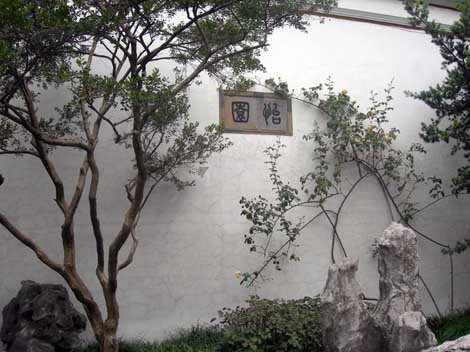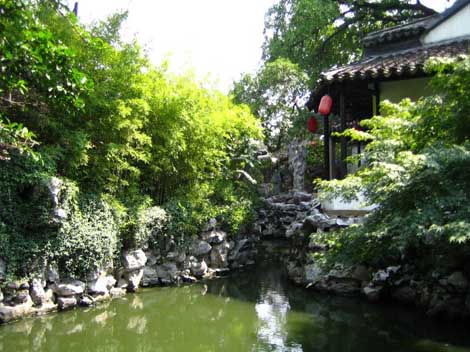
This was built during the Tongzhi and Guangxu periods of the Qing dynasty (1862-1908 A.D.); formerly it was Gu Wenbin's private garden. It is a representative and complete south-eastern gentry's private garden, comprising of garden, residence, artificial villages and ancestral halls.
The Garden of Pleasance is the most recently built of Suzhou gardens. It absorbs all strong points of other Suzhou gardens, representing the very best of garden arts. Its twisting and winding corridors are adapted from the layout of the Surging Waves Pavilion. Its rockeries refer to the layout of the Mountain Villa with Embracing Beauty. Its cavities add pools' art quite deep. It's lotus ponds are similar to those in the Master-of-Nets Garden clear and bright. Its marble boat copies the boat-like structure named Fragrant Isle of the Humble Administrator's Garden - exquisite and special. Thus its particular style is based on adaption of the best o other gardens.

In the arts of garden creation the Garden of Pleasance absorbs many good aspects of the Song, Yuan, Ming and Qing dynasties. Due to its small area, the garden's layout makes use of the methods of space division, opposite sceneries, view borrowing, etc. Rockeries, winding bridges and buildings are put together; forming numerous three-dimensional outlines, making the garden's views appear deep, twisting and without end. The results of small appearing big, few appearing many, and limited space yielding rich views are thus created. Rocks and stones have been collected from many places; some are placed in courtyards, some next to trees, with different and particular shapes. They can be enjoyed both raised vertically or laid horizontally, giviing the feeling of being amongst hills and pools, as if visiting a famous mountain. These comprise the Garden of Pleasance's main characteristics.
We recommend:
